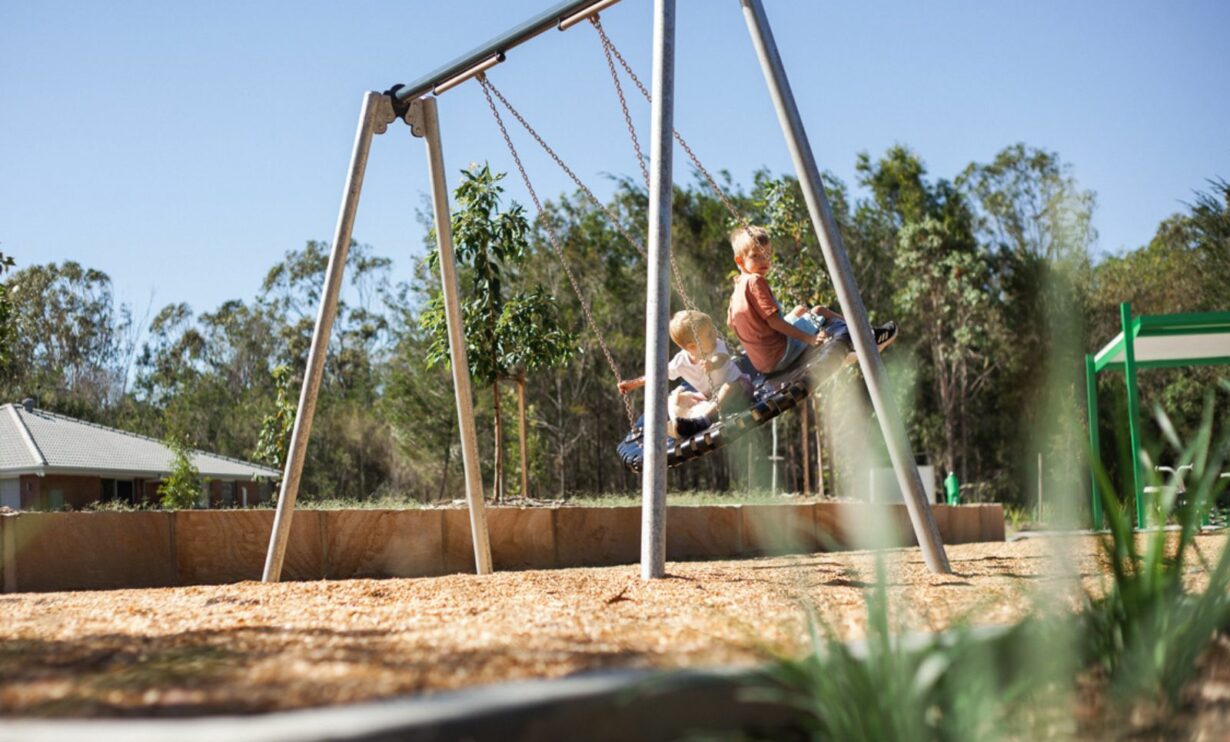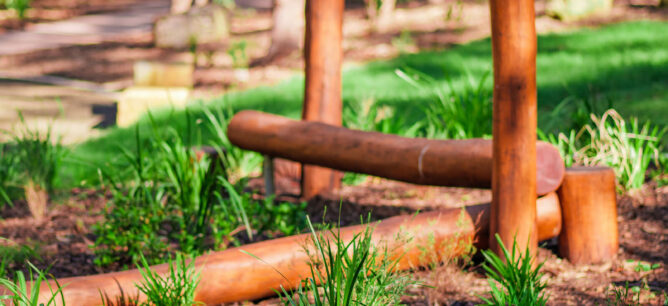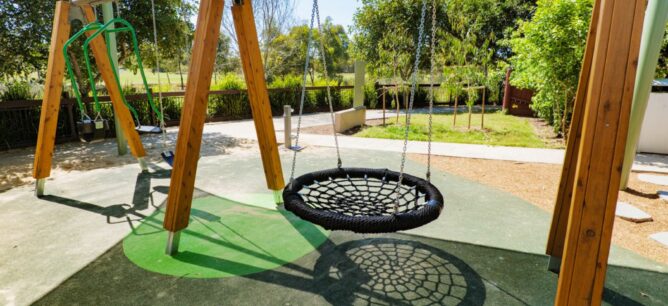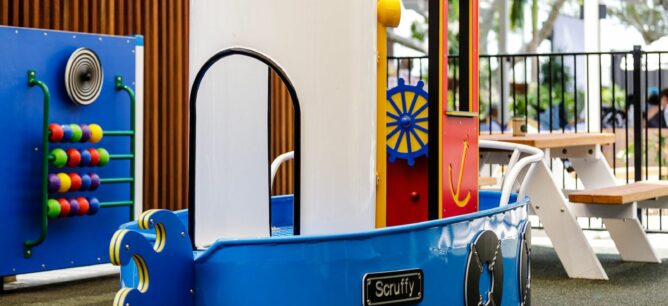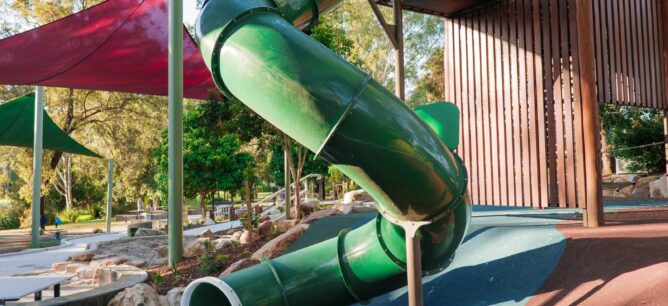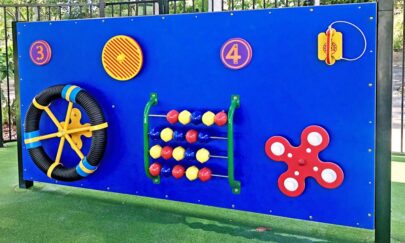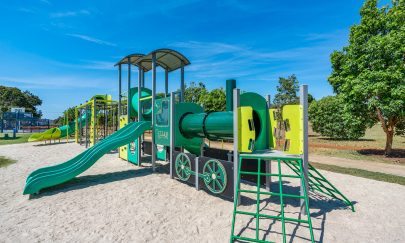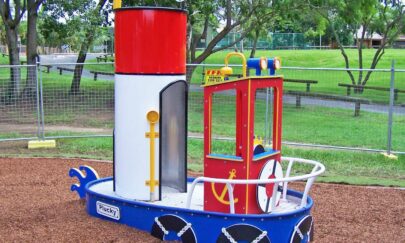Trends and innovations in nature play equipment
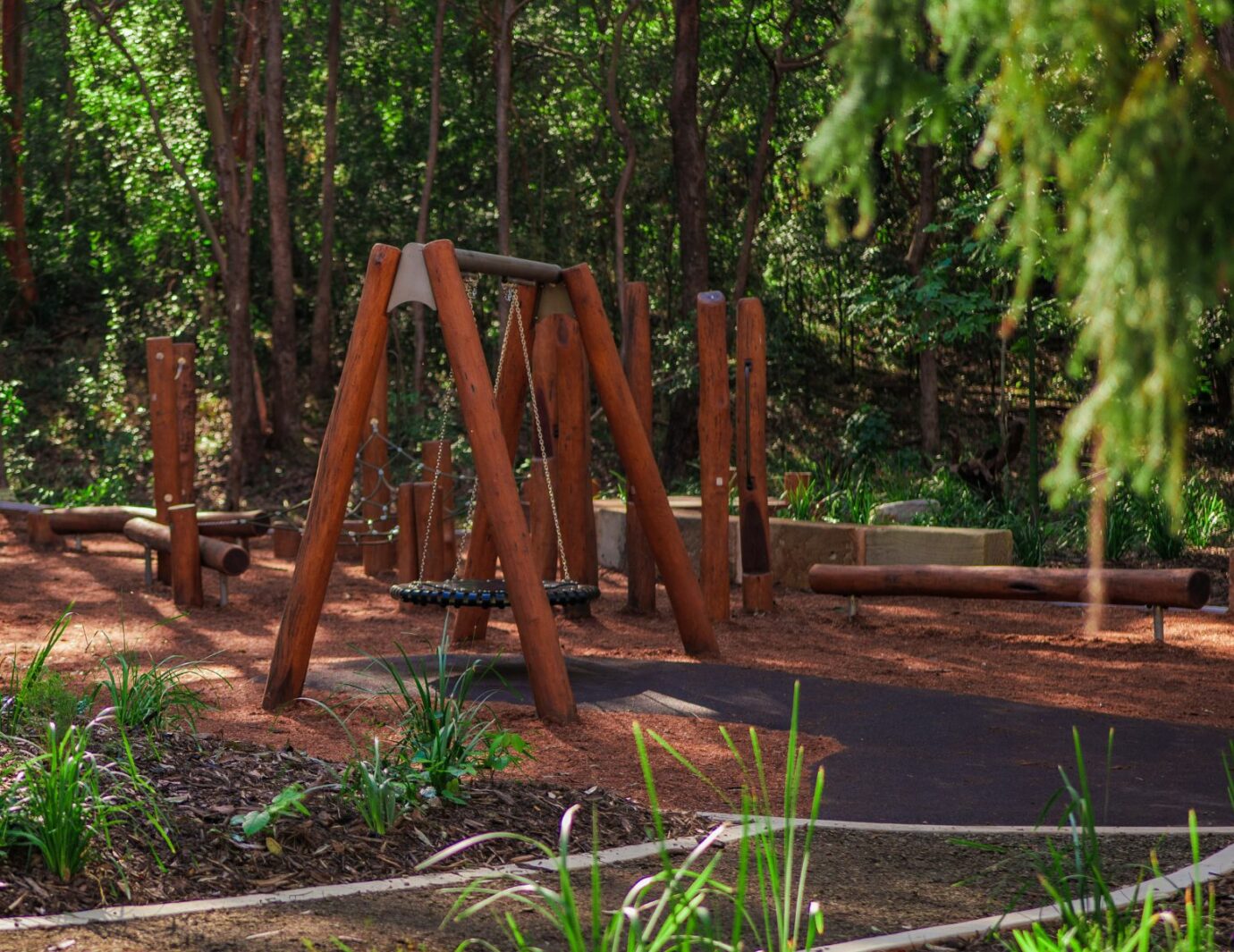
Expect to see more of these innovations shaping the nature play landscape.
Nature play has become increasingly popular in recent years, with landscape architects embracing the idea of integrating natural elements into outdoor play spaces. As a result, there has been a surge in innovative advancements and new trends in nature play equipment.

What is nature play?
Nature play is an approach to outdoor play that encourages children to connect with and explore the natural environment through unstructured and imaginative activities. In its purest form, it involves providing opportunities for children to engage with natural elements such as trees, rocks, water and plants. On the other end of the continuum is nature-inspired playground structures, such as those incorporating natural materials, organic shapes, and elements like logs, boulders and water features. These playgrounds offer children the chance to engage with nature in safe and stimulating ways, promoting physical activity, creativity and a deeper connection to the natural world. By blending elements of both unstructured nature play and nature-inspired playground equipment, children can enjoy a holistic and enriching outdoor play experience that fosters exploration, imagination and environmental appreciation.
The increasing popularity of nature play can be attributed to its holistic approach to child development. Nature play fosters environmental awareness, providing an antidote to urbanisation. It also supports risk-taking and adventurous play. As more parents, educators, and communities recognise the value of nature play, the demand for nature-inspired playgrounds and outdoor nature play experiences continues to rise. So what are some innovations we’re seeing shape the nature play landscape?
Sustainable materials and eco-friendly designs
A notable trend in nature play equipment is the emphasis on sustainability and eco-friendly design principles. Landscape architects are increasingly opting for materials such as recycled plastic, sustainably-sourced timber and natural fibres to create playground structures that minimise environmental impact and promote conservation.
Our Natura range of timber playground equipment, for example, is made from sustainable Australian ironbark. As it’s grown here in Australia, ironbark is pre-seasoned for the local climate, so it doesn’t require any chemical treatment to achieve its durability. More importantly, it’s vastly superior for Australian landscape projects when compared to timbers such as robinia, which are commonly sourced and shipped from European forests.
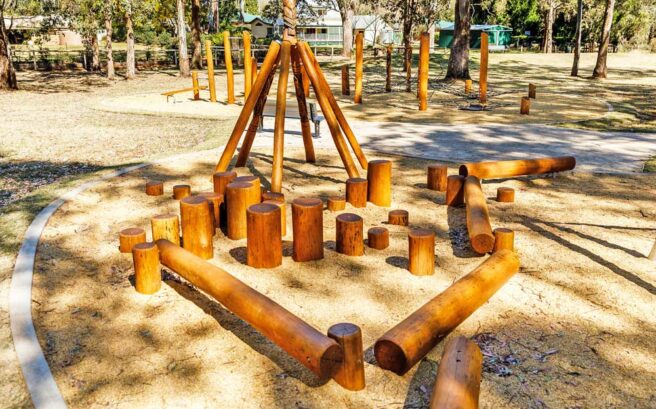
100% native plant schedules
From sensory gardens to natural play spaces, native plants offer endless opportunities for children to explore, learn, and connect with nature, fostering a deeper appreciation for the local environment and the importance of conservation.
As landscape architects are well aware of, there’s an increasing demand for the use of native species in school and council landscape designs. By incorporating native plants into playground landscapes, landscape architects can create vibrant and biodiverse ecosystems that support local wildlife and enhance the overall environmental sustainability of the site. Native plants are well-adapted to the local climate, soil conditions, and wildlife populations, requiring less water, fertilisers and pesticides to thrive. Moreover, they provide essential food and habitat for pollinators such as bees, butterflies, and birds, contributing to the health of the surrounding ecosystem.
Biophilic design principles
Biophilic design principles are gaining traction in the realm of nature play equipment, with a focus on creating spaces that foster a sense of connection with the natural world. Biophilic playgrounds integrate elements such as natural textures, colours and patterns to mimic the sensory experiences of the outdoors. Features such as living roofs, vertical gardens and water features further enhance the biophilic appeal, creating immersive and rejuvenating environments that promote health, wellbeing and creativity.
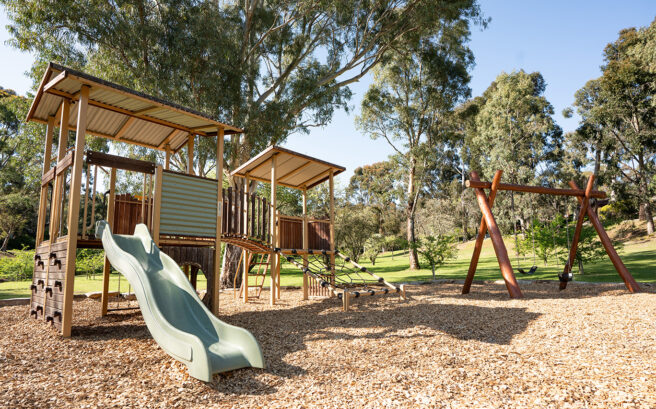
Flexible and modular designs
Flexibility and modularity have become key considerations in the design of nature play equipment, allowing for adaptability and customisation to suit the unique needs of each site and community.
Modular playground systems offer interchangeable components and flexible configurations that can be easily modified or expanded over time. This versatility ensures that playgrounds remain relevant and engaging as children grow and evolve, while also accommodating changing trends and preferences.
Sand and water play elements
Landscape projects have been incorporating timber playground equipment for decades now. Timber structures, such as log balance beams, tree stump seating and wooden teepees offer opportunities for climbing, balancing and imaginative play, enhancing the overall play value and aesthetic appeal of nature-inspired playgrounds.
What we’re now noticing, however, is a dramatic increase in the demand for sand and water play equipment. Sand and water play areas provide opportunities for sensory exploration, imaginative play and hands-on learning, allowing children to manipulate natural materials and observe cause-and-effect relationships. From water pumps and channels to sand tables and digging areas, these features encourage open-ended play and creativity while promoting physical activity and social interaction. By embracing these innovative elements, landscape architects can create nature play environments that engage children’s senses, foster exploration and inspire a lifelong connection to the outdoors.
As landscape architects continue to embrace the principles of nature play, the future of outdoor play spaces is filled with exciting possibilities. By staying informed about the latest trends and innovations in nature play equipment, landscape architects can create dynamic, sustainable and engaging environments that inspire children to connect with nature.
Looking to incorporate nature playground equipment into your next project?
Speak to us to get a free playground design concept
